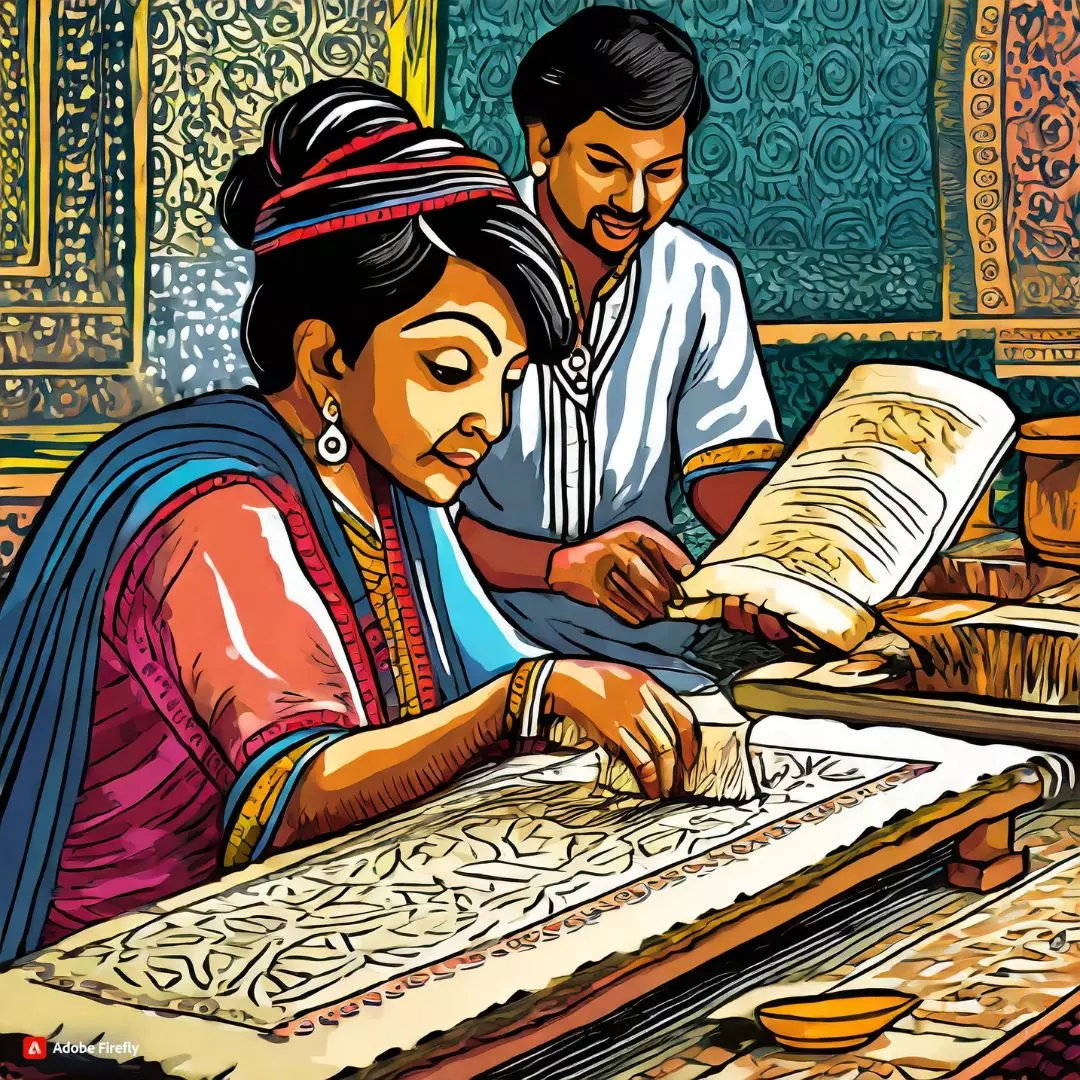Rooted in the annals of ancient civilizations, the age-old art of block printing has etched its mark on the cultural tapestry of societies across the globe. As the fashion industry continues to evolve, so too does the practice of block printing, adapting and thriving in the ever-changing landscape of contemporary fashion.
Historical Origins and Cultural Significance:
The origins of block printing can be traced back to ancient civilizations like China and India, where artisans meticulously carved intricate designs onto wooden blocks. These blocks, dipped in vibrant dyes, were pressed onto fabric, creating stunning patterns. The craft, traveling along trade routes, adapted to various cultures, leaving an indelible mark on the textile traditions of each region.
Traditional Block Printing in Fashion:
Patterns and Motifs:
Traditional block-printed fabrics are renowned for their rich and intricate patterns, featuring geometric shapes, flora, fauna, and mythological motifs, each symbolizing deeper cultural meanings.
Color Palette:
The vibrant and earthy color palette of traditional block printing is derived from natural dyes, establishing a close connection between the craft and the environment.
Cultural and Regional Variations:
Block printing underwent fascinating transformations across continents, adopting distinct styles in different regions, such as the paisleys of Persia, the indigos of Japan, and the Provence florals.
Influence of Globalization on Design Aesthetics:
The turn of the 20th century witnessed a shift in block printing with the advent of technological advancements. Hand-carved wooden blocks shared the stage with digital tools and machinery, leading to a fusion of traditional and contemporary designs as designers drew inspiration from diverse cultures.
Technological Advancements in Contemporary Block Printing:
While digital printing brought efficiency to the fashion industry, traditional craftsmanship retained its value. Contemporary block printing now harmoniously combines the precision of digital printing with the authenticity of handcrafted blocks, resulting in a unique synergy.
Sustainable Practices in Contemporary Block Printing:
In response to environmental concerns, the contemporary block printing industry has embraced eco-friendly practices. Designers use eco-conscious dyes, materials, water-based inks, and non-toxic pigments, reducing the environmental impact.
Designers Embracing Contemporary Block Printing:
From renowned fashion houses to independent artisans, designers are enthusiastically incorporating contemporary block printing into their collections. The marriage of tradition and innovation gives rise to garments that are both timeless and cutting-edge.
Consumer Trends and Preferences:
As consumer awareness grows, there is a discernible shift towards sustainable and unique fashion. The narrative behind each block-printed garment resonates with those seeking more than just clothing, influencing both large-scale manufacturers and smaller artisanal brands.
Emerging Trends in Block Printing:
The future holds promise for block printing, with a resurgence of interest in handcrafted products and advancements in digital and sustainable printing techniques. The trajectory is towards a more inclusive, environmentally conscious, and culturally rich fashion landscape.
Modernization of Block Printing in Fashion:
Juxtaposing traditional and contemporary approaches has created a tapestry of diversity and innovation in the evolution of block printing in fashion. The industry faces challenges with resilience and creativity, offering glimpses into a sustainable and culturally rich future.
Block printing stands as a testament to the enduring power of craftsmanship, weaving a narrative that transcends time and trends. As fashion ventures into the future, the story of block printing serves as a reminder that fashion is not merely about what we wear but about the stories woven into the fabrics that adorn us. The resilience of tradition in the ever-evolving dialogue between tradition and modernity continues to shape the fashion landscape.
Also Read: Study Reveals Plant-Based Diets In China, Japan & India Linked To Lower Alzheimer’s Risk












